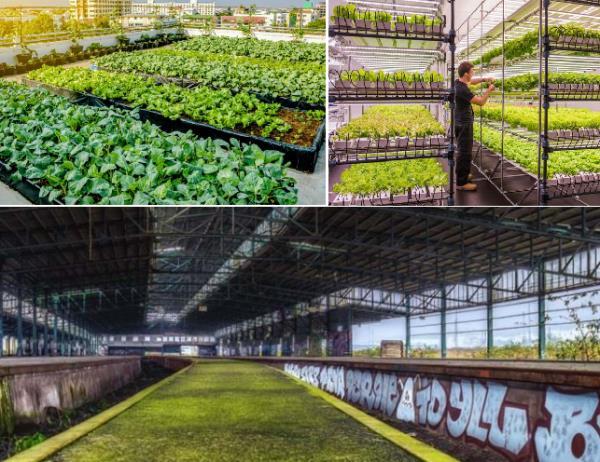Urban agriculture shows better yields than conventional agriculture
United Kingdom/England
Tuesday 30 August 2022
FJ
Urban agriculture could gain area by adding other sites such as rooftops, industrial buildings, private and community gardens, and parks to multi-layered growth sites (Photos: earth.com, pinterest/as -vfarm, lancaster.ac.uk).
In many countries, urban agriculture is now seen as a reliable means of enhancing food self-sufficiency. The productivity of urban agriculture had rarely been studied, until this study conducted by researchers at Lancaster University (UK) which revealed that urban agriculture and hydroponics can exceed the yields of rural farms.
The Rurban Revolution project brings together an interdisciplinary team dedicated to demonstrating and understanding the value of urban culture for food security, health and the environment. The study compiled data on urban agriculture from 53 countries.
The study finds that urban yields of certain crops, such as cucumbers, tubers and lettuce, are 2 to 4 times higher than those of rural agriculture. Other crops achieve similar or higher rates than rural agriculture.
Some crops like lettuces, kale and broccoli are more naturally suited to being grown vertically in indoor spaces than others: "You can't exactly stack apple trees in a growth chamber 5-10 layers", said Dr. Florian Payen, lead author and researcher at the Lancaster Environment Center, "although we did find one study that was successful in growing wheat piled up like this."
Hydroponics is suitable for watery vegetables, such as tomatoes, but also for leafy greens and other crops. Cultivation in fully controlled environments can be done year-round, and allows for more harvests per year, resulting in higher annual yields than outdoor farming.
Urban farming can significantly boost the supply of fresh fruit and vegetables for countries like the UK, scientists say.
View the full study HERE
source : lancaster.ac.uk





